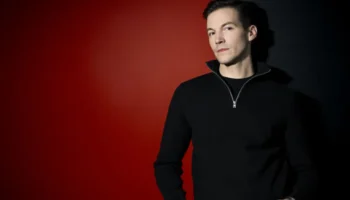The second esctoday.com TOP TEN list was presented this week. Now we will provide a complete overview as well as and overview on innovations that were the closest to reaching the list. Furthermore, next week's topic will be revealed.
This is the full top ten:
- Open voting (1957)
…which has become the heart of the Eurovision Song Contest - Semi finals (2004)
…which managed to double (and later triple) the joy - Televoting (1997)
…which brought democracy to the contest - Abolition of the language rule (1973/1999)
…which embraced the freedom of choice - Visible spokespersons (1994)
…who made the voting sequence as entertaining as it is today - Relegation (1993)
…which made some countries miss the contest for the first time - 12 points voting system (1975)
…which made everyone in Europe know the French word for "twelve" - Big four rule (1999)
…which shows that a golden key can open any door, even in Eurovision - Abolition of the orchestra (1999)
…which is the reason why some backings should be good actors rather than good musicians - Broadcast in colour (1968)
…which made the choice of clothing more important than ever
Innovations that almost made it
The TV broadcast would have been the innovation at number eleven and it almost made the list. In 1956, the contest was broadcast on radio and only the reprise of the winning song was filmed. In 1957, the contest was broadcast on television for the first time. However, as many people did not have a TV set at that time, most of them still followed the show on the radio. Therefore, the TV broadcast is not an innovation that changed the contest right away, unlike the ten innovations that made the list.
The first time a couple hosted the Eurovision Song Contest was in Paris in 1978. Almost every year before, the contest was hosted by a female solo presenter. The only exception was the very first Eurovision Song Contest, which was hosted by a male presenter. The host couples have become a tradition and since 1994, almost every contest was presented by a pair. The only exception were the trios that hosted the contest in 1999 and 2010.
There were also many technical innovations that the contest always has taken advantage of. This includes minor innovations like wireless microphones (1983) and the digital scoreboard (1988) as well as bigger innovations like the internet (1996) and HD broadcast (2009). From a technical point of view, the Eurovision Song Contest was almost always up to date.
In 2004, the EBU introduced the corporate design of the contest when it comes to the media franchise. Before 2004, the logos and trophies looked different every year. The heart logo has already become kind of a symbol of the competition. On the other hand, it did limit the creative freedom of the host broadcasters.
This concludes our second top ten list. Now it is time to reveal the topic of next week's list. It will be:

Many Eurovision Song Contest entries have been covered and many of those cover versions can be considered rather strange, unsual, unexpected or simply entertaining, either because the song is transferred to another music style or because it features different lyrics.
If you know one or more cover versions that you think could make the list, you can take part in the creation of the top ten. Please DO NOT (!) tell us by posting a reaction not to spoil the surprise for the others. Rather tell us by using the contact centre (choose the option "News to report").
If the song features funny lyrics, please also send us an excerpt of them along with a translation if the song is performed in another language than English, French, Italian, German or Norwegian. Suggestions can be submitted until Monday, 12:00 CET.



